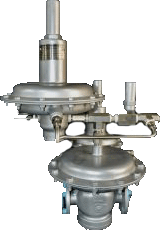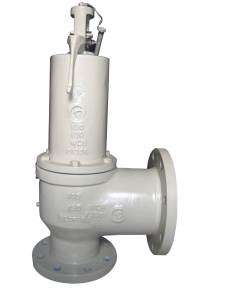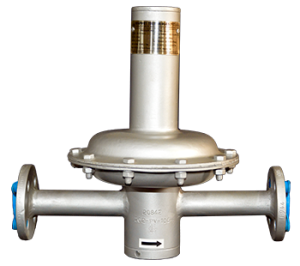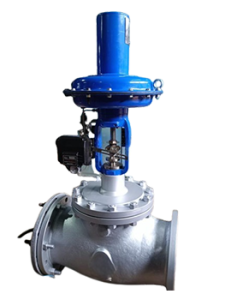Whether industrial systems or domestic water supply, the correct choice of water pressure tank is critical to regulating a stable water pressure, reducing pump cycling, and ensuring trouble-free system operation. Proper sizing and well-maintained pressure tanks increase the efficiency and lifespan of your water system as well as avoid equipment wear and tear and lower energy bills. That being said, with several types of pressure tanks on offer, it’s important to have knowledge about their characteristics and factor in a few considerations when selecting the right one.
This article is an exhaustive buyer’s guide, covering the various types of water pressure tanks, their salient features, and the important factors to be considered while selecting the most appropriate one for your use.
What is a Water Pressure Tank?
A water pressure tank is a holding container that holds water under pressure to supply water at a consistent and level rate. It performs the function of utilizing compressed air to force the stored water into the system when one turns on a faucet or generates a demand. When water is sucked out, the pressure of the tank drops, inducing the pump to fill it again and build up the needed pressure.
Pressure tanks are also employed both in residences and industries to minimize pump cycling, increase pump life, and provide a steady water flow and are an essential part of any water system.
How Does a Water Pressure Tank Work?
Filling the Tank:
The pump charges the tank with water, pushing the air within the tank.
Building Pressure:
When the tank gets filled with water, the air compresses, building pressure in the tank.
Water Usage:
When the water fixture is opened, the trapped air compresses the stored water outward, providing consistent water pressure.
Pump Activation:
Upon the reduction of water level to a specific cut-in point, the pump activates again to fill the tank and establish pressure.
Types of Water Pressure Tanks
The selection of the appropriate type of pressure tank hinges on the application, system demands, and operating conditions. The three fundamental types of water pressure tanks are:
1. Diaphragm Pressure Tanks
A diaphragm tank employs a flexible diaphragm that separates the air and water inside the tank. As water fills the tank, the diaphragm presses the air, keeping it at constant pressure.
✅ Benefits:
Keeps air and water from mixing, minimizing waterlogging risk.
Needs little or no maintenance.
Suits residential and industrial uses well.
❗ Best For:
Residential water systems.
Industrial water supply with moderate pressure needs.
2. Bladder Pressure Tanks
Bladder tanks have a replaceable rubber bladder that contains the water independent of the compressed air. The bladder expands when water enters and compresses the air to hold system pressure.
✅ Pros:
Prevents waterlogging through separation of air and water.
Provides a longer life span due to the replacement bladder.
Ideally suited for systems with changing water demand.
❗ Ideal For:
Agricultural or irrigation systems.
High-demand domestic or industrial systems.
3. Air-Over-Water Pressure Tanks
In an air-over-water tank, water and air are found in the same chamber with no physical separation. When water is pulled out from the tank, the air is compressed to hold pressure.
✅ Advantages:
Less initial cost.
Basic design and straightforward installation.
❗ Limitations:
Susceptible to waterlogging over a period of time.
Needs routine maintenance to restock air.
❗ Best For:
Low-pressure domestic uses.
Applications where cost is an overriding factor.
Key Factors to Consider When Selecting a Water Pressure Tank
In order to choose the appropriate water pressure tank for your use, consider the following factors:
✅ 1. System Capacity and Demand
The capacity of the pressure tank should match the capacity of the system and the water usage patterns.
Residential Use: Think about daily home water usage and peak demand hours.
Industrial Use: Consider system capacity, flow rate, and pressure demands to avoid downtime and optimize operations.
Pro Tip:
A larger tank minimizes pump cycling and prolongs the life of the pump by limiting the number of pump starts and stops.
✅ 2. Tank Material and Durability
The type of tank material ensures that it is resistant to corrosion, pressure, and wear over time. Some of the common tank materials are:
Steel Tanks: Strong and resistant to corrosion, best used in industrial settings.
Fiberglass Tanks: Light, corrosion-resistant, and used in residential and low-pressure systems.
Composite Tanks: The best of both worlds, composite tanks are corrosion-resistant and low-maintenance.
Pro Tip:
For corrosive environments or fluctuating temperature conditions in applications, use corrosion-resistant materials such as stainless steel or fiberglass.
✅ 3. Pressure Rating and Maximum Operating Pressure
The pressure rating of the tank must be equal to or greater than the operating pressure of the water system to provide safe and efficient performance.
Residential Systems: Typically operate under 40-60 psi.
Industrial Systems: Might need increased pressure ratings, depending on the application.
Pro Tip:
Always make sure that the maximum operating pressure of the pressure tank is a minimum of 20% greater than the system’s normal operating pressure.
✅ 4. Size and Volume of the Tank
Tank size impacts system performance directly. Larger tanks lower pump cycling and offer more stored water, making them suitable for high-demand applications.
Small Tanks (10-20 gallons): For small homes and low-demand situations.
Medium Tanks (20-50 gallons): For average-sized homes and average demand.
Large Tanks (50+ gallons): Ideal for industrial uses and high-demand water systems.
Pro Tip:
When determining the proper tank size, take into account the pump flow rate, cycle time, and system pressure.
✅ 5. Application Type: Residential vs. Industrial
Pressure tanks intended for home systems might not satisfy the heavy requirements of industrial use.
Residential Uses: Call for moderate capacity and pressure ratings.
Industrial Uses: Require large tanks, greater pressure ratings, and heavier materials.
Pro Tip:
In industrial use, select a tank that can support fluctuating pressures and incorporate high-flow systems.
✅ 6. Ease of Maintenance and Replacement
Look for tanks with low maintenance needs and simple access to inner parts for replacement or repairs.
Bladder and Diaphragm Tanks: Low maintenance and less susceptibility to waterlogging.
Air-Over-Water Tanks: Need periodic air refilling to avoid loss of efficiency.
Pro Tip:
Select tanks that have replaceable internal parts to increase the system’s lifespan.
Undersizing the Tank: An undersized tank causes increased pump cycling, which results in premature pump failure.
Disregarding Pressure Ratings: Incompatible pressure ratings can lead to system inefficiencies and safety risks.
Overlooking Material Quality: Applying non-corrosion-resistant materials in corrosive environments can reduce tank life.
Failing to Consider Maintenance Needs: Select tanks that are compatible with your maintenance capabilities and operational requirements.
Top Tips for Installing and Maintaining a Pressure Tank
Proper Installation: Place the tank in a dry, ventilated location to avoid corrosion.
Periodic Inspections: Inspect for leaks, corrosion, and pressure stability.
Air Pressure Tests: Verify the pre-charge pressure of the tank is compatible with system demands.
Flush the System Regularly: Drain sediment accumulation to avoid clogging and inefficiency.
Conclusion
Selecting the proper water pressure tank for your application provides stable water pressure, minimizes pump cycling, and safeguards the system from damage. Whether residential or industrial use, knowing the various types of pressure tanks, taking into account important considerations like size, material, and pressure ratings, and avoiding pitfalls can guide you to a smart decision. By choosing the appropriate pressure tank and taking proper care of it, you can improve the efficiency, lifespan, and dependability of your water system, which will ensure uninterrupted operations and lower maintenance expenses.





